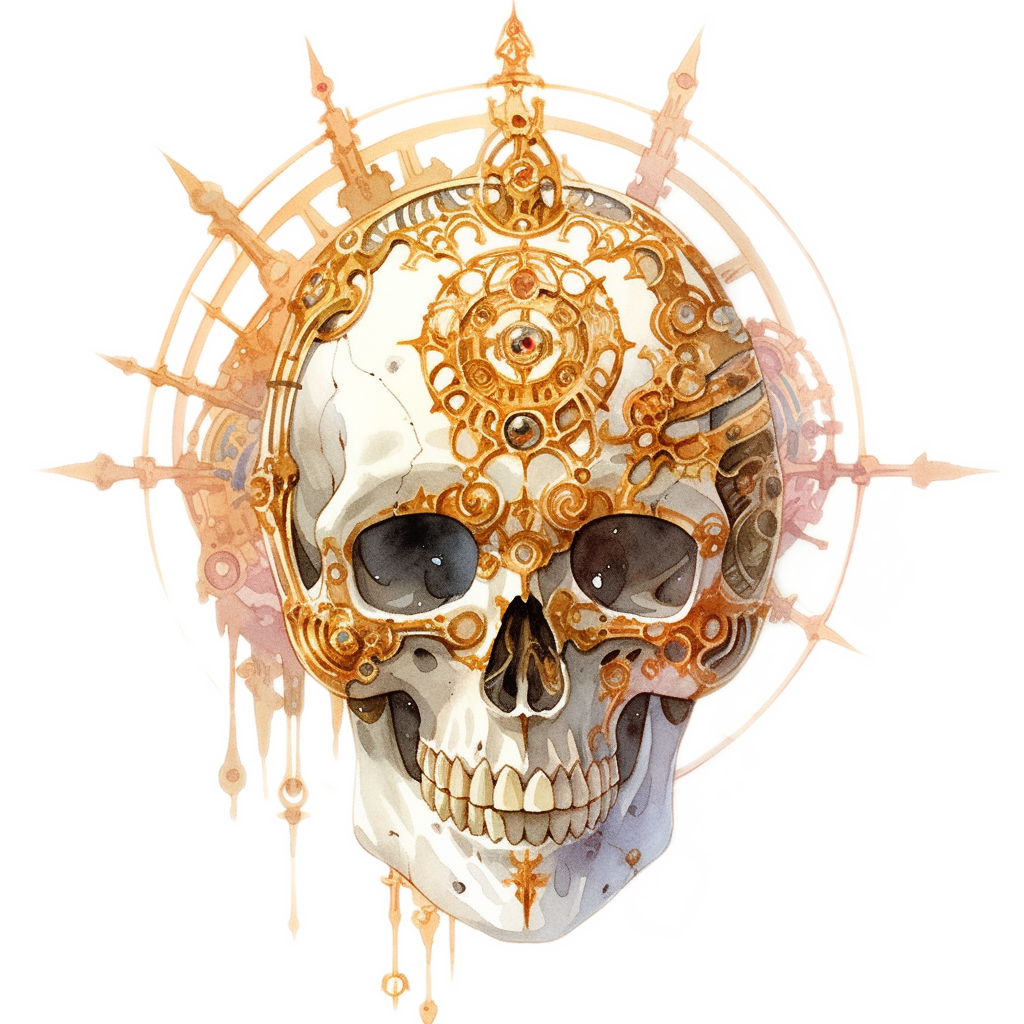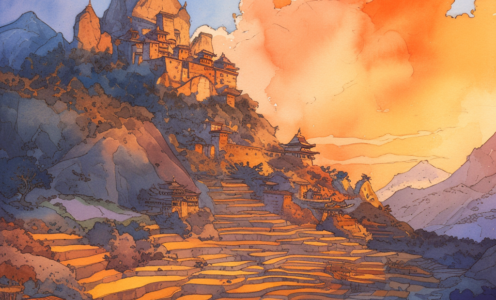K’un Lun
The Plane of the Golden Rule
Planelette of the Splinterlands, lying ethically between the Outlands and Mount Celestia
Locations in K’un Lun
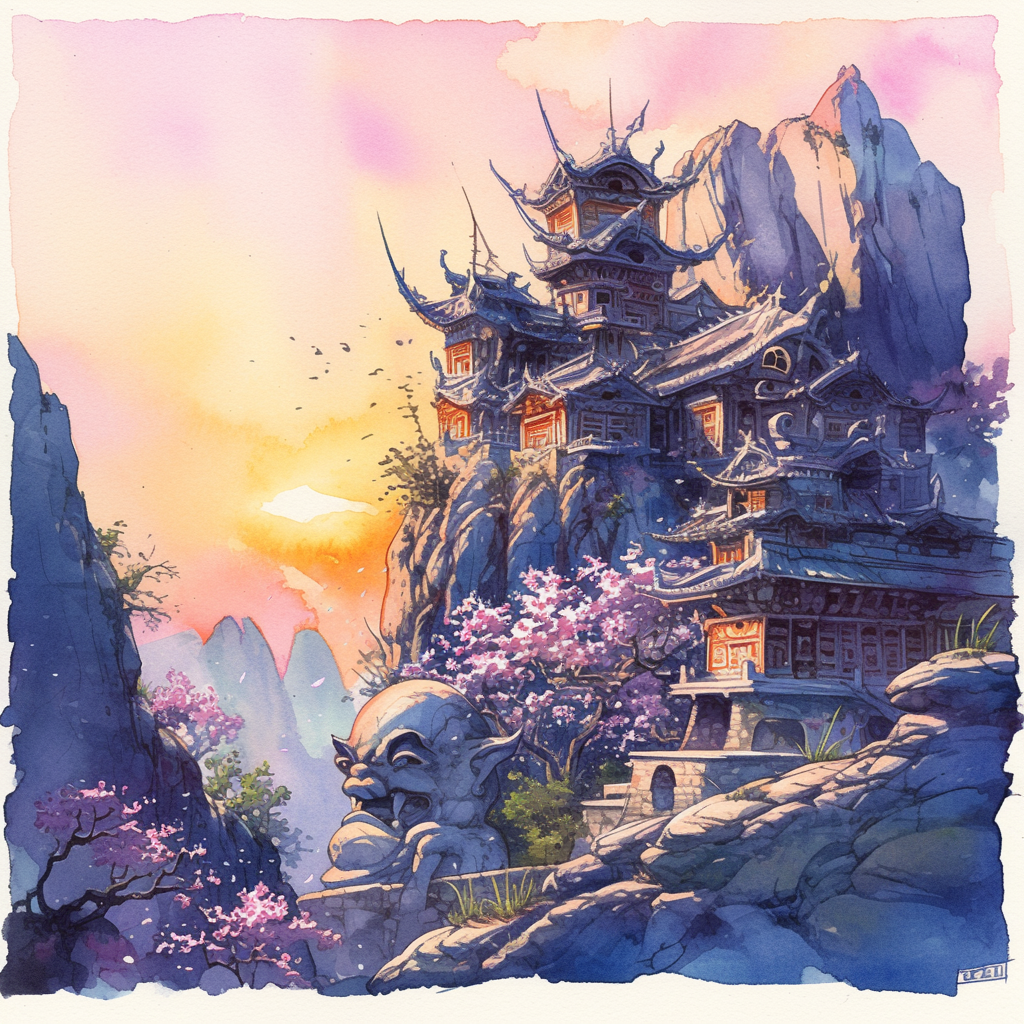
- Land of the Immortals (Realm of the Chinese Pantheon)
- Lady Meng’s Palace
- Palace of Fu Hsing
- Palace of K’ung Fu-Tzu
- Palace of Lao Tzu
- Palace of the Pa Hsein
- Forum of Satisfaction (realm of Mithra)
- Motherly Dedication (realm of Ilmatar)
- Triumphs Heroic (realm of Nike)
K’un Lun is a planelette growing at the edge of the Hinterlands, on the side of the Great Ring that’s orientated towards Mount Celestia. It’s been called the plane of the Golden Rule—which, if you’re not a scholar of Celestial Law can be summarised as do unto others as you would have done unto yourself. As such, K’un Lun is the plane of manners, honour and benevolence; the plane between lawful goodness and neutrality. It exemplifies the most positive aspects of neutrality–specifically, it is the plane of moderation. Everything is moderate and laid back here. Almost boring. At least that’s the way it looks at first.
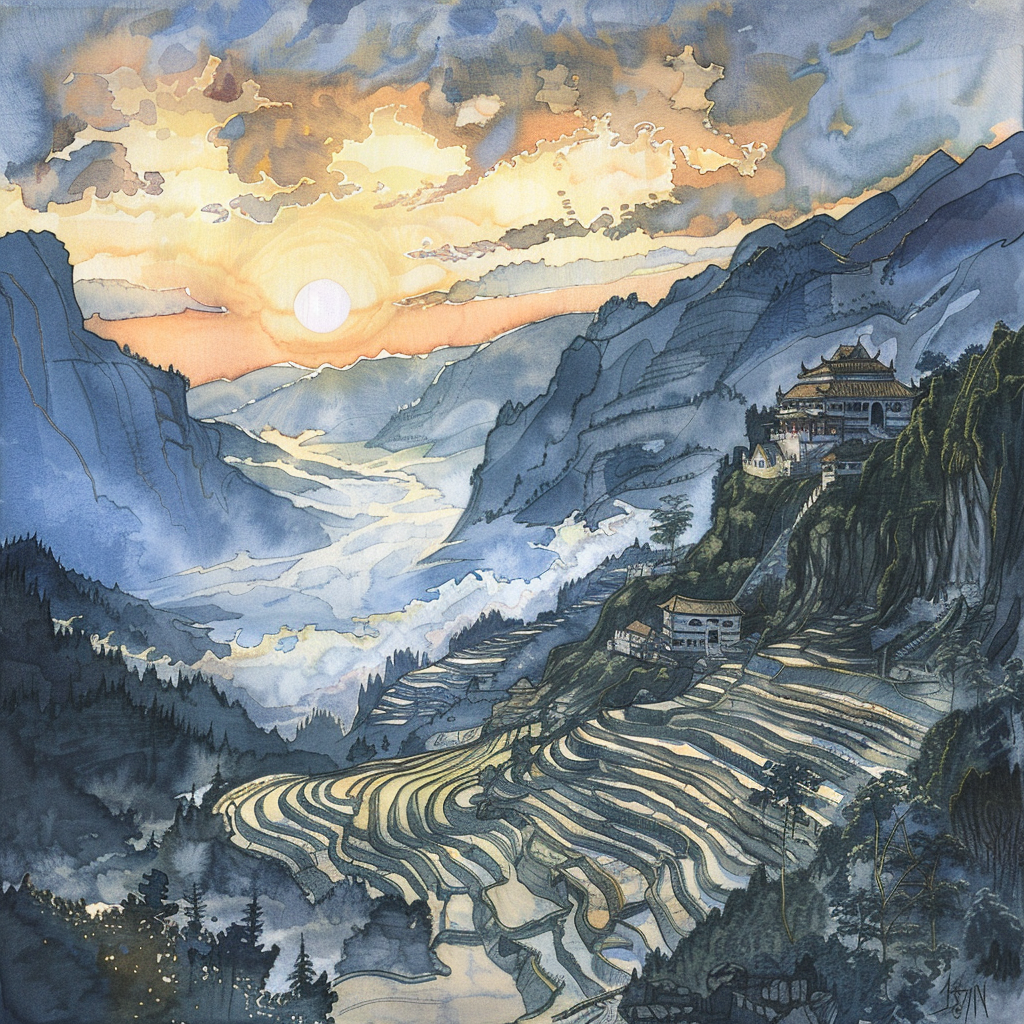
The land in K’un Lun is mostly mountainous. Many ornate temples and solitary monasteries can be found at the summits of these peaks, with small villages and terraced crops in the valleys. K’un Lun holds several notable realms. The most prominent is the Land of the Immortals. The most honourable followers of the Celestial Bureaucracy dwell here. Lady Meng, wife of Shang-Ti, rules the realm. A peach tree grows near her palace, and the chant is it grants immortality to those who eat it. Other immortals of note who share this realm are Fu Hsing, K’ung Fu-Tzu, Lao Tzu, and the Pa Hsien.
The philosopher Confucius is the most well-known petitioner here. He dwells in Lady Meng’s palace and advises on matters moral and ethical. His teachings touch on the correct etiquette in social relationships, rulings on matters of justice and tradition, and the concept of ren. Ren is best translated as ‘human-heartedness’, the teaching that one should see nothing improper, hear nothing improper, say nothing improper and do nothing improper. It’s perhaps also the reason why a bunch of powers would listen to a mortal’s ramblings on philosophy—being human (albeit a spirit of one), Confucius understand humanity better than any immortal ever could. The moderate character of K’un Lun even influences the Chinese powers to set aside their divine egos for a moment and listen to his wisdom.
Ren is not far off; those who seek it have already found it
—Confucius
Ceremony and ritual, also called li, are also important in K’un Lun society. The tea ceremony is one such ritual. A cutter can spend years learning the correct way to conduct this ritual properly.
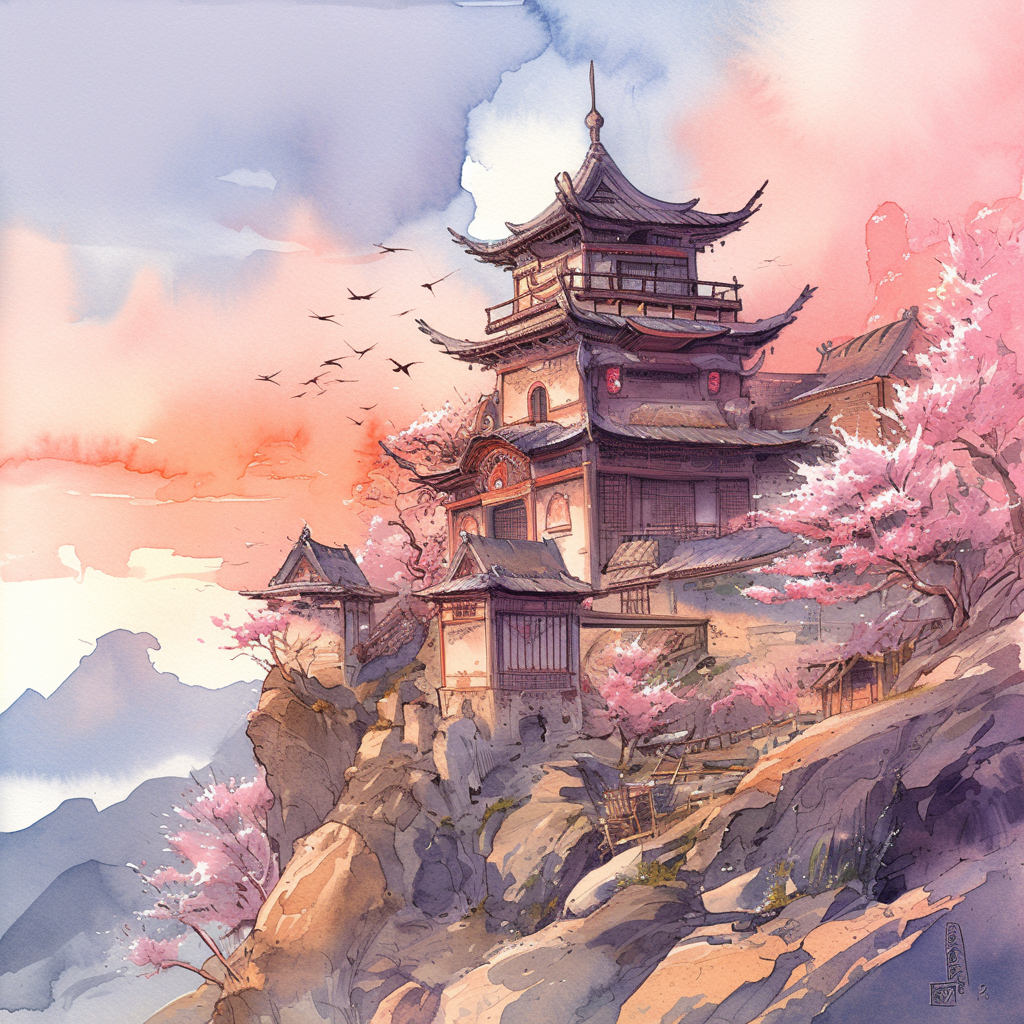
Another important concept in K’un Lun philosophy is the rectification of names. The scholars of the Library of Rectitude in the Land of the Immortals spend their time debating and refining the definition of terms like ‘king’, or ‘lord’, ‘servant’ or ‘power’. The concept of rectification of names means that individuals with certain ranks have an obligation to behave in the way that rank is defined. Should they not comply with the social obligations that are implied, then they should be overthrown. The effect of this weighs heavily on the behaviour of the inhabitants of K’un Lun, and is surely the reason for all the moderation that transpires here. You can imagine how much chaotic cutters would rail against this.
Rid of the two ends, take the middle
—Confucius
Some other powers have set up kips here in K’un Lun, too:
Mithra, a Persian power of light, justice and oaths has a realm called the Forum of Satisfaction. Chant goes that Mithra is an aspect of Mitra of the Persian and Greek pantheons.
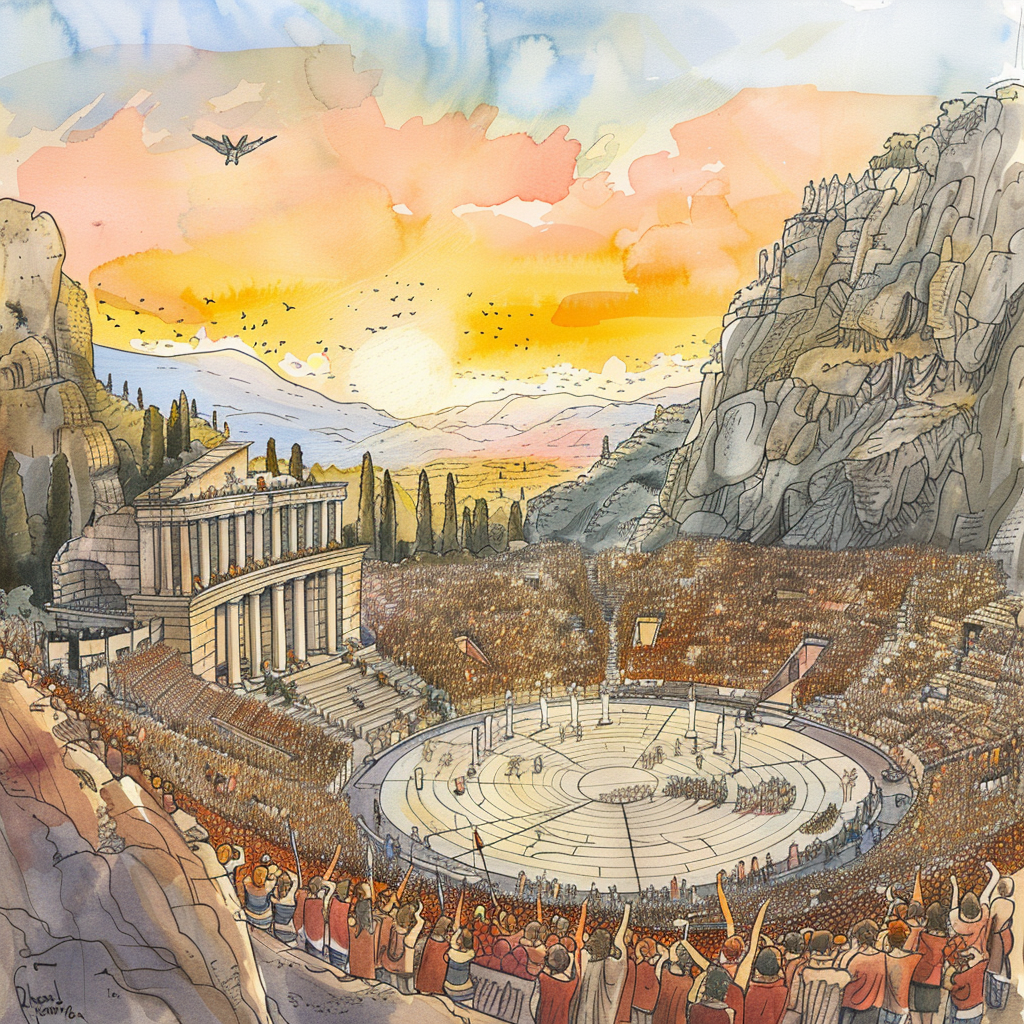
Ilmater of the Finnish pantheon has a realm called Motherly Dedication. Don’t confuse her with Ilmater of the Faerûnean pantheon. The Finnish power Ilmatar was born of the air, and created the multiverse from seven cosmic eggs. She was a virgin goddess but, following her impregnation by the wind, gave birth to the Finnish gods of music, magic, and smithing. She’s now largely retired from the planar hurly burly and her realm in K’un Lun is on the highest and most inaccessible mountain of the planelette.
Nike of the Greek pantheon has a realm called Triumphs Heroic. Chant goes the strict lawful nature of Nike often doesn’t quite mesh with the chaotic home of the other Greek powers in Arborea, and she struck out to find a realm that suited her petitioners better. Her realm here holds a magnificent stadium that can hold any number of petitioners in the audience for the games of sport, athletics and heroism which are performed continuously here.
The gate to K’un Lun from the Outlands is on a mountain named Shangri-la. On top of that mountain is a monastery that dutifully guards the secret of the portal to K’un Lun.
More information on the Planes of Cordance can be found here.
Source: Greg Jensen, Alex Roberts, Jon Winter-Holt. Canonwatch: All of the Planes of Cordance and the concept of the Splinterlands are homebrew and non-canonical. From Greg’s original conception of the Planes of Cordance as full planes between the Outlands and the Great Ring in the 1990s, I’ve toned this down a little making them planelettes budding at the edge of the Outlands, which (a) explains why they are so little known, and (b) makes them easier to ignore if you don’t want to use them.
